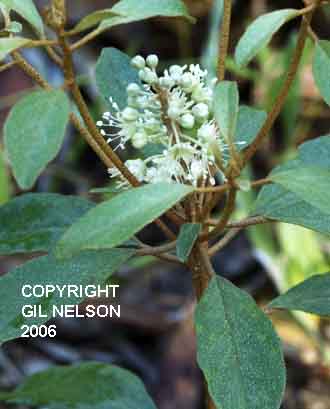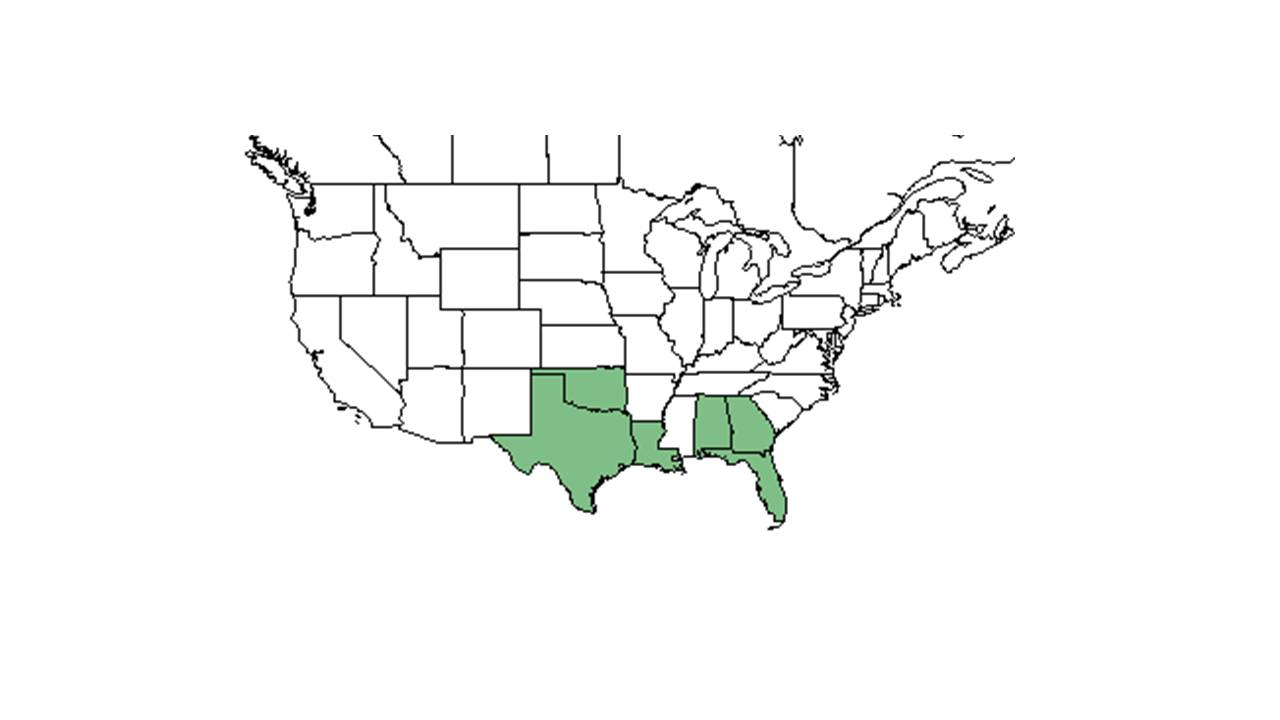Difference between revisions of "Croton argyranthemus"
(→Description) |
(→Ecology) |
||
| Line 23: | Line 23: | ||
==Distribution== | ==Distribution== | ||
==Ecology== | ==Ecology== | ||
| − | + | ||
===Habitat=== <!--Natural communities, human disturbed habitats, topography, hydrology, soils, light, fire regime requirements for removal of competition, etc.--> | ===Habitat=== <!--Natural communities, human disturbed habitats, topography, hydrology, soils, light, fire regime requirements for removal of competition, etc.--> | ||
It is extremely vulnerable to disturbance. One reason for this might be that it relies too much on native species of ants for dispersal.<ref name="Kirkman et al 2004">Kirkman, L. K., K. L. Coffey, et al. (2004). "Ground cover recovery patterns and life-history traits: implications for restoration obstacles and opportunities in a species-rich savanna." Journal of Ecology 92(3): 409-421.</ref> It can be found in longleaf pine communities.<ref>Cumberland, M. S. and L. K. Kirkman (2013). "The effects of the red imported fire ant on seed fate in the longleaf pine ecosystem." Plant Ecology 214: 717-724.</ref> It can also be found in sandhill communities.<ref name="Stamp and Lucas 1990"/> | It is extremely vulnerable to disturbance. One reason for this might be that it relies too much on native species of ants for dispersal.<ref name="Kirkman et al 2004">Kirkman, L. K., K. L. Coffey, et al. (2004). "Ground cover recovery patterns and life-history traits: implications for restoration obstacles and opportunities in a species-rich savanna." Journal of Ecology 92(3): 409-421.</ref> It can be found in longleaf pine communities.<ref>Cumberland, M. S. and L. K. Kirkman (2013). "The effects of the red imported fire ant on seed fate in the longleaf pine ecosystem." Plant Ecology 214: 717-724.</ref> It can also be found in sandhill communities.<ref name="Stamp and Lucas 1990"/> | ||
| Line 37: | Line 37: | ||
Ants are an agent of seed dispersal (Cumberland et al 2013). C. argyranthemus is an important game food plant: it is consumed by doves, quail, and deer.<ref name="Hebb 1971">Hebb, E. A. (1971). "Site preparation decreases game food plants in Florida sandhills." Journal of Wildlife Management 35: 155-162.</ref> | Ants are an agent of seed dispersal (Cumberland et al 2013). C. argyranthemus is an important game food plant: it is consumed by doves, quail, and deer.<ref name="Hebb 1971">Hebb, E. A. (1971). "Site preparation decreases game food plants in Florida sandhills." Journal of Wildlife Management 35: 155-162.</ref> | ||
===Diseases and parasites=== | ===Diseases and parasites=== | ||
| + | |||
==Conservation and Management== | ==Conservation and Management== | ||
==Cultivation and restoration== | ==Cultivation and restoration== | ||
==Photo Gallery== | ==Photo Gallery== | ||
==References and notes== | ==References and notes== | ||
Revision as of 20:12, 9 July 2015
| Croton argyranthemus | |
|---|---|

| |
| photo by Gil Nelson | |
| Scientific classification | |
| Kingdom: | Plantae |
| Division: | Magnoliophyta - Flowering plants |
| Class: | Magnoliopsida – Dicotyledons |
| Order: | Euphorbiales |
| Family: | Euphorbiaceae |
| Genus: | Croton |
| Species: | C. argyranthemus |
| Binomial name | |
| Croton argyranthemus Michx. | |

| |
| Natural range of Croton argyranthemus from USDA NRCS Plants Database. | |
Contents
Description
Common Name: healing croton
Distribution
Ecology
Habitat
It is extremely vulnerable to disturbance. One reason for this might be that it relies too much on native species of ants for dispersal.[1] It can be found in longleaf pine communities.[2] It can also be found in sandhill communities.[3]
Phenology
It is a summer forb.[1]
Seed dispersal
Seeds have elaiosomes, and can be dispersed by ants such as fire ants (Cumberland et al 2013). It can also be dispersed explosively (Kirkman et al 2004). Three of the ballistic euphorbs (C. stimulosus, C. argyranthemus and S. sylvatica) produce seeds with elaiosomes and all of the ballistic species are collected by ants, in particular Pogonomyrex badius Latreille (Long and Lakela 1971; N.E. Stamp and J. R. Lucas, personal observation).”[3]
Seed bank and germination
Fire ecology
Are included in the flowering plant survery – post burn – in Heuberger’s study.[4]
Pollination
Use by animals
Ants are an agent of seed dispersal (Cumberland et al 2013). C. argyranthemus is an important game food plant: it is consumed by doves, quail, and deer.[5]
Diseases and parasites
Conservation and Management
Cultivation and restoration
Photo Gallery
References and notes
- ↑ 1.0 1.1 Kirkman, L. K., K. L. Coffey, et al. (2004). "Ground cover recovery patterns and life-history traits: implications for restoration obstacles and opportunities in a species-rich savanna." Journal of Ecology 92(3): 409-421.
- ↑ Cumberland, M. S. and L. K. Kirkman (2013). "The effects of the red imported fire ant on seed fate in the longleaf pine ecosystem." Plant Ecology 214: 717-724.
- ↑ 3.0 3.1 Stamp, N. E. and J. R. Lucas (1990). "Spatial patterns and dispersal distances of explosively dispersing plants in Florida sandhill vegetation." Journal of Ecology 78: 589-600.
- ↑ Heuberger, K. A. and F. E. Putz (2003). "Fire in the suburbs: ecological impacts of prescribed fire in small remnants of longleaf pine (Pinus palustris) sandhill." Restoration Ecology 11: 72-81.
- ↑ Hebb, E. A. (1971). "Site preparation decreases game food plants in Florida sandhills." Journal of Wildlife Management 35: 155-162.